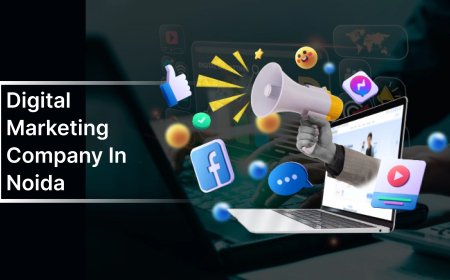Use Content Personalization to Increase Audience Retention

In the era of information overload, capturing and keeping the attention of your audience is no easy feat. The digital landscape is saturated with content, and unless your messaging resonates with your audience on a personal level, it’s likely to get lost in the noise. That’s where content personalization comes in — a powerful strategy to not only grab attention but to significantly increase audience retention over time.
Content personalization is more than just using someone’s first name in an email. It’s about delivering tailored content experiences that reflect the user’s preferences, behaviors, and interests. In doing so, marketers can build deeper relationships with their audience, drive higher engagement, and ultimately foster brand loyalty.
Why Personalization Matters
At its core, content personalization is about relevance. When content is personalized, it speaks directly to the user’s needs and aspirations, making it more likely that they’ll stay, explore, and return for more. According to a report by Epsilon, 80% of consumers are more likely to make a purchase when brands offer personalized experiences. Similarly, personalized emails deliver 6x higher transaction rates than generic ones.
But personalization isn’t just good for conversions — it’s a retention powerhouse. By showing your audience that you understand and care about their preferences, you increase the chances that they’ll engage with your brand repeatedly.
Types of Content Personalization
Content personalization can take many forms depending on your platform, audience, and business objectives. Here are a few key types:
Demographic Personalization
This includes tailoring content based on attributes like age, gender, location, and language. For instance, a fashion retailer might promote winter wear to users in colder regions and summer wear to those in tropical climates.
Behavioral Personalization
This relies on user behavior such as pages visited, time spent on the site, past purchases, or search history. Netflix’s content recommendation engine is a classic example of behavioral personalization in action.
Psychographic Personalization
Psychographics involve deeper aspects like values, interests, and lifestyles. Brands that truly understand their audience segments can craft emotionally resonant content that aligns with what their users care about.
Real-Time Personalization
With the help of AI and automation, marketers can now personalize content dynamically, in real-time. Think product recommendations, pop-ups, or chat support that adjusts based on user activity.
Tools and Technologies That Enable Personalization
To implement content personalization effectively, leveraging the right tools is crucial. Some popular platforms include:
- Customer Relationship Management (CRM) systems like HubSpot and Salesforce
- Content Management Systems (CMS) with personalization features such as WordPress (with plugins), Adobe Experience Manager, or Sitecore
- Email Marketing Platforms like Mailchimp, ActiveCampaign, or Klaviyo
- AI-powered analytics and recommendation engines like Optimizely, Segment, or Dynamic Yield
These tools collect data, segment your audience, and deliver tailored experiences across various channels.
Best Practices for Effective Content Personalization
Start with Clean Data
Good personalization starts with good data. Ensure that the data you’re collecting is accurate, up-to-date, and gathered ethically. Misusing or misunderstanding data can lead to irrelevant personalization that does more harm than good.
Segment Your Audience
Not all users are the same. Use segmentation to divide your audience into meaningful groups. For instance, first-time visitors may need introductory content, while returning users might benefit from more in-depth materials or offers.
Create Content Variations
Craft different versions of your content for different audience segments. This could include landing pages, email sequences, product recommendations, and blog content. Use A/B testing to identify which variations perform best.
Automate Wisely
Use marketing automation to deliver personalized content at scale, but don’t overdo it. Over-personalization or uncanny targeting can feel invasive. Balance automation with human oversight to ensure the experience feels natural and respectful.
Measure and Optimize
Track key performance indicators like bounce rates, time on site, email open/click-through rates, and conversion rates. Use these insights to refine your personalization strategy continuously.
Real-World Example: Amazon’s Personalization Engine
Amazon is often cited as the gold standard for personalization. Through sophisticated data analysis and machine learning, the platform offers highly relevant product suggestions, personalized emails, and curated homepage experiences. As a result, users spend more time on the site, view more pages, and are more likely to return. This approach has been pivotal in retaining millions of customers globally.
How Personalization Impacts Retention
When users encounter content that feels like it was made for them, they’re more likely to stay engaged. They’ll spend more time on your platform, explore more offerings, and feel a connection with your brand. Personalization nurtures a sense of value and belonging — which, in turn, builds trust and loyalty.
It also reduces friction in the user journey. Instead of sifting through irrelevant content, users find exactly what they’re looking for — fast. This seamless experience is key to keeping your audience coming back for more.
The Future of Personalization
As technology continues to evolve, the personalization landscape will only grow more sophisticated. Emerging technologies like AI-driven chatbots, predictive analytics, and even augmented reality (AR) experiences are poised to take personalized content to the next level.
However, with this comes the responsibility of respecting privacy and data transparency. Users are more aware than ever about how their data is used. Brands must prioritize ethical practices and clear communication about how personalization works.
Final Thoughts
Content personalization isn’t just a marketing trend — it’s a strategic imperative. Brands that personalize effectively enjoy better engagement, higher conversion rates, and most importantly, increased audience retention. Whether you're new to digital marketing or looking to take your strategies to the next level, it’s time to embrace personalization as a core pillar of your content strategy.
To truly excel and gain a deeper understanding of modern personalization techniques, it’s essential to Master Digital Marketing through structured, hands-on learning that keeps you ahead in the evolving digital landscape.
By understanding your audience, leveraging the right tools, and delivering content that truly resonates, you can foster long-term relationships that drive sustainable growth.
What's Your Reaction?
































































